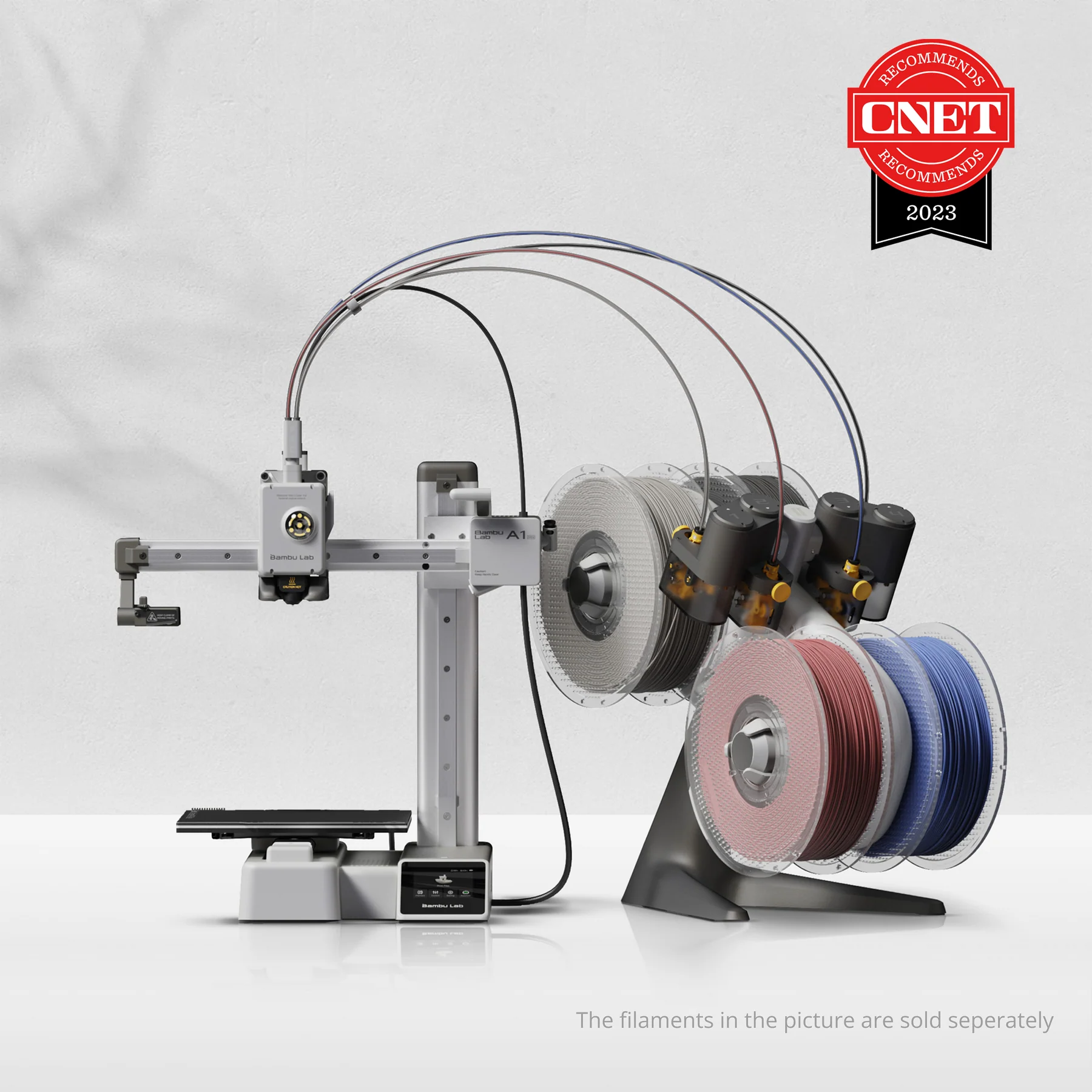Compare K1 Max vs A1 Mini
Comparison between the best 3D printers
Choose the best 3D printer at the best price. The cheapest 3D printers are here.
Buy a 3D printer here with 3D Fila.
 |
 |
|
| Model | K1 Max[BUY K1 Max] |
A1 Mini |
| Printing Material | Filament | Filament |
| Buy Filament for Creality 3D K1 Max | Buy Filament forBambu Lab A1 Mini | |
| Estimated price | $1300,00 | $549,00 |
| Manufacturer | Creality 3D | Bambu Lab |
| Release Year | 2023 | 2023 |
| Print Volume [mm] | 300x300x300 | 180x180x180 |
| Printer Size [mm] | 435x462x526 | 315x347x365 |
| Weight [kg] | 18 | 5,5 |
| Power Loss Recovery | YES | YES |
| Enclosed printer | YES | NO |
| Bed Leveling | Automatic | Automatic |
| Filament End Sensor | YES | YES |
| Bed type | Heated | Heated |
| Power supply system | Direct Drive | Direct Drive |
| Standard nozzle | 0,4 | 0,4 |
| Maximum Nozzle Temperature [°C] | 300 | 300 |
| Maximum Bed Temperature [°C] | 100 | 80 |
| Maximum printing speed [mm/s] | 600 | 500 |
| Filament holder | YES | YES |
| Camera for supervision | YES | YES |
| Recommended filaments | ABS, PLA, PETG, TPU, PA, ASA, PC, PLA-CF, PA-CF, PET-CF | PLA, PETG, TPU, PVA |
| Recommended slicers | Creality Print, Cura, Simplify, Slic3r, IdeaMaker e outros | Bambu Studio, Super Slicer, Cura, Prusa Slicer, Orca |
| Maximum Resolution [mm] | 0,1 | 0,1 |
| Processor | 32-bit Silenciosa | |
| Display | Display touchscreen 4,3'' | Touchscreen 2,4'' |
| Power Supply | 150 W | |
| Connectivity | USB / Wi-Fi / Ethernet | Wifi, Bambu bus, Cartão SD |
| Operating systems | Windows, Mac, Linux | Windows, Linux, Macbook |
| Date of registration in the system | 2023-12-01 | 2024-04-10 |
| Release date | 2023 | 2023 |
| Extra features | The Creality K1 Max stands out as a fast Core XY 3D printer with a large build volume of 300 x 300 x 300 mm. It is fully enclosed and equipped with AI sensors to prevent print failures. This model has a smooth and flexible PEI build platform, and uses an automatic leveling system with LIDAR, as well as a filament run-out sensor. LAN, Creality Cloud and USB Flash Disk connectivity are available, as well as a 4.3-inch touchscreen interface. The K1 Max is robust, weighing in at 18 kg, and includes an AI camera and limited version of the Klipper firmware. Its motion system is solid and the printer is efficient with high-temperature filaments, but it is not silent. Assembly is 99% complete, requiring only minor adjustments before use. | The Bambu Lab A1 Mini stands out not only for its impressive speed and automatic calibration, but also for its multi-color printing capability thanks to AMS Lite. This innovative system makes multi-color printing easy, making it accessible to everyone. AMS Lite, specific to the A1 Mini, supports up to four different materials simultaneously, providing creative freedom without complications. With comprehensive sensors for energy monitoring and recovery, a camera for timelapses and Wi-Fi control, the A1 Mini and AMS Lite together offer an intuitive and advanced 3D printing experience, ideal for materials such as PLA, PETG and TPU, and designed for simplicity and fast maintenance with quick-change nozzles. |
| Support for multiple colors and materials (AMS and CFS) | NO | YES |
Notes * |
||
| Cost-benefit | 7 / 10 | 7 / 10 |
| Hardware | 4.8 / 10 | 4.8 / 10 |
| Tela | . | . |
| Print volume | 4 / 10 | 3 / 10 |
| Performance | 5 / 10 | 4 / 10 |
| [BUY K1 Max] |
Conclusion |
| In comparing the Creality K1 Max and the Bambu Lab A1 Mini, both 3D printers are competitive choices in the 2023 market, catering to different needs and preferences. The Creality K1 Max offers a larger print volume, making it ideal for users requiring more extensive projects. Its enclosed design, advanced AI sensors, and robust build allow for high-temperature materials and a smoother user experience, albeit at a heavier weight. This model excels in performance metrics, making it suitable for serious hobbyists and professionals who prioritize speed and versatility in material usage. Conversely, the Bambu Lab A1 Mini is more compact and lightweight, making it a great option for users with limited space or those just starting in 3D printing. Its innovative AMS Lite system enhances its capability for multi-color printing, providing users with creative flexibility without added complexity. Additionally, its intuitive features and user-friendly maintenance make it appealing for beginners who want efficiency and simplicity. When evaluating cost-effectiveness, the K1 Max delivers higher overall performance but comes at a premium price, while the A1 Mini strikes a balance between affordability and essential features suitable for less demanding projects. Ultimately, the choice between the two depends on the specific needs of the user: those looking for a professional-grade machine might lean toward the K1 Max, while those seeking accessibility and ease of use may find the A1 Mini more appealing. |

